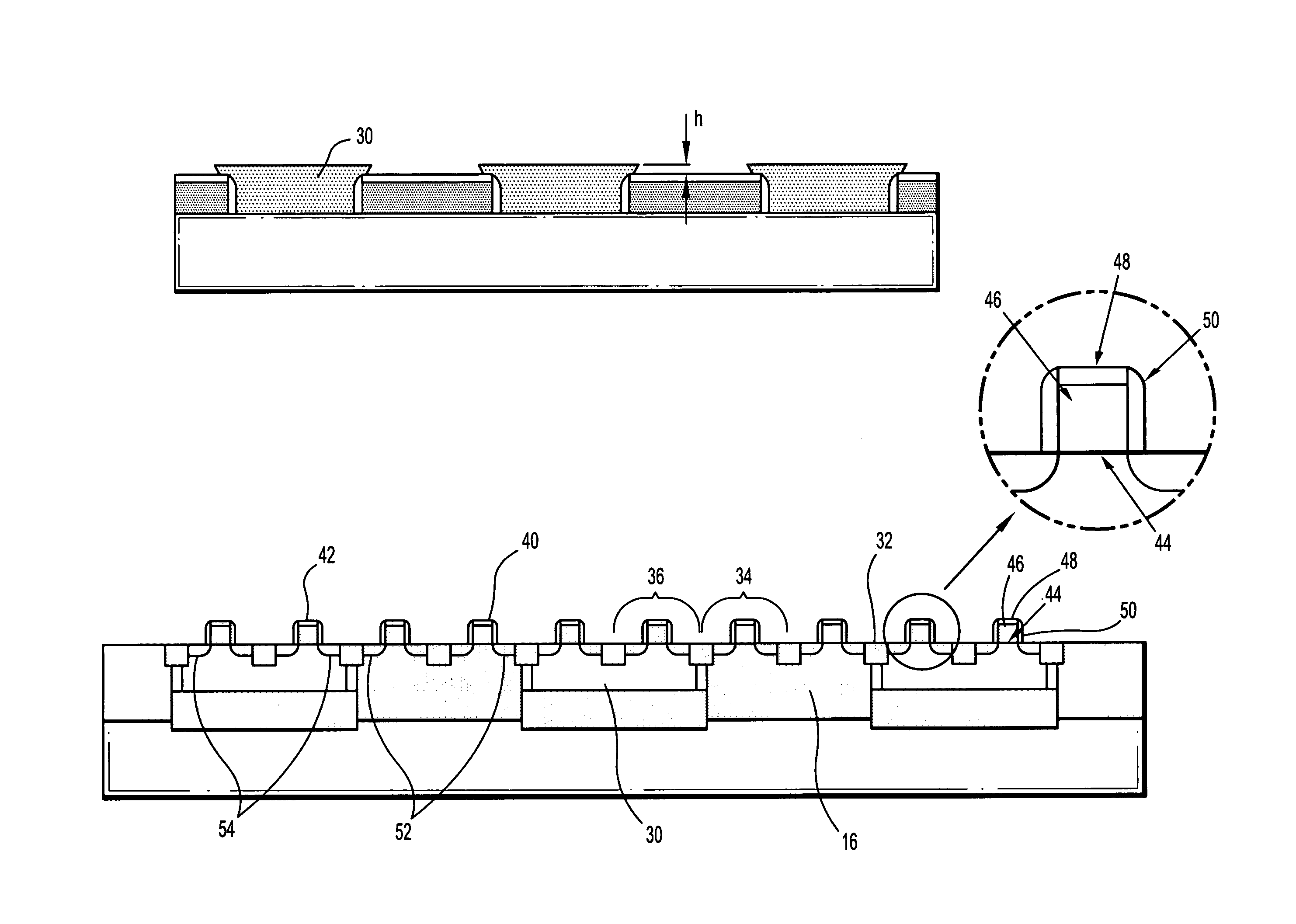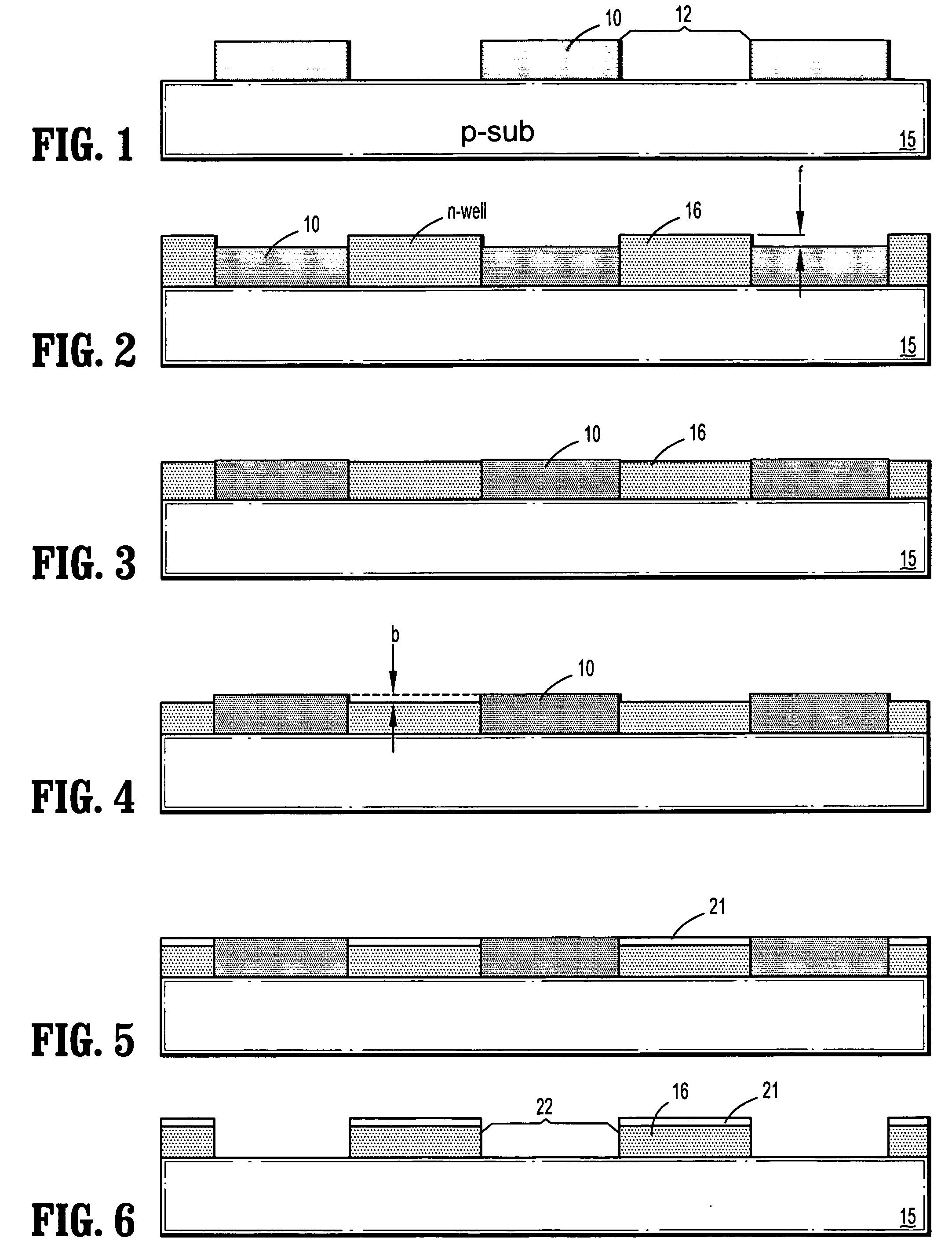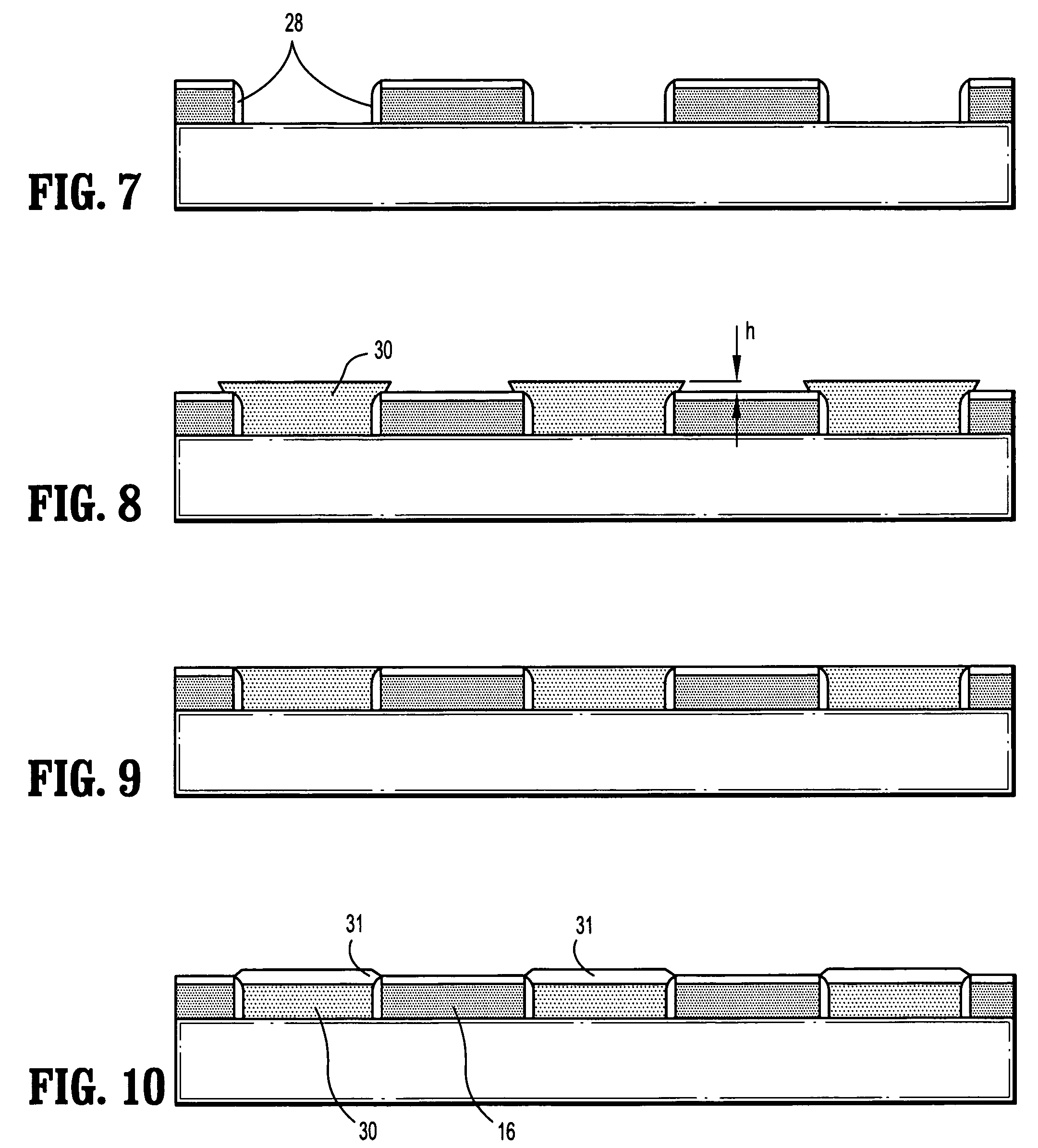CMOS well structure and method of forming the same
a well and cmos technology, applied in the field of integrated semiconductor devices, can solve the problems of not being able to isolate the n-well and biasing it differently from the substrate, not being able to apply the same scaling factor which applies to the transistor to the conventional well, and not being able to uniformly measure the doping profile at the edges of the well across the breadth
- Summary
- Abstract
- Description
- Claims
- Application Information
AI Technical Summary
Benefits of technology
Problems solved by technology
Method used
Image
Examples
Embodiment Construction
[0018]In various exemplary embodiments of the invention, a vertical sidewall well is formed in a bulk silicon wafer. Consecutive low-temperature selective epitaxy processes are used to form the vertical sidewall single well, double well and triple well structures, so that proximity effect due to ion scattering is eliminated. In the absence of the proximity effect, minimum distance can be kept between devices all the way to the well boundary. The various exemplary embodiments of the invention use both deep and shallow trench isolation. Spacer-type thin vertical deep trenches are formed at the boundary of the wells using side-wall spacer techniques, while the shallow trenches are used not only to isolate the devices within the wells, but also to remove defects at the well boundary caused by selective epitaxy.
[0019]FIGS. 1–11 are cross sectional views showing various steps of a method for forming a CMOS structure according to an exemplary embodiment of the invention. The present embodi...
PUM
 Login to View More
Login to View More Abstract
Description
Claims
Application Information
 Login to View More
Login to View More - R&D
- Intellectual Property
- Life Sciences
- Materials
- Tech Scout
- Unparalleled Data Quality
- Higher Quality Content
- 60% Fewer Hallucinations
Browse by: Latest US Patents, China's latest patents, Technical Efficacy Thesaurus, Application Domain, Technology Topic, Popular Technical Reports.
© 2025 PatSnap. All rights reserved.Legal|Privacy policy|Modern Slavery Act Transparency Statement|Sitemap|About US| Contact US: help@patsnap.com



